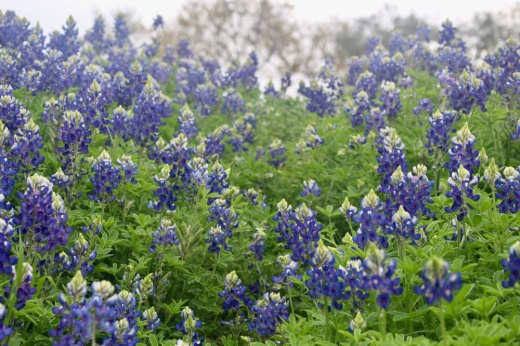While the beloved state wildflower is a welcome accomplice of warmer weather, scientists have noted the blooms are over a month early this year.
What's happening?
A typical bluebonnet season begins in early April, but the first buds arrived to Central Texas toward the end of February, said Andrea DeLong-Amaya, the director of horticulture for the Lady Bird Johnson Wildflower Center.
"The timing of the bluebonnet season has everything to do with the warm weather. It's been a while since we've had our last big freeze, and we've now had unseasonably warmer weather, which has sped up their growing," DeLong-Amaya said.
DeLong-Amaya said the flower typically blooms until mid-May before they become "toasted," but hot weather is not necessarily the culprit of their demise. Instead, consistent rainfall is a key determiner of bluebonnet mortality.
"The seeds start to germinate in the fall, when we get a lot of rain, and then continue to grow in the winter, which is a really critical time," DeLong-Amaya said.
In January, Austin got 6.07 inches of rain, the highest January precipitation the area has seen in over 15 years. Additionally, October's rainfall was above average, according to data from the National Weather Service.
"If it ends up being a really dry spring, [the season] might stop earlier. So we have our fingers crossed for good, well-spaced rains. And that's important for other wildflowers too," DeLong-Amaya said.
On top of it all, DeLong-Amaya said last year's drought killed off many plants, but the robust bluebonnet seed prevails in direct sun and degraded soils. With less competition now, the flowers are more likely to dominate open green spaces.
What residents should know
Those hoping to enjoy the early bluebonnet season without breaking the law will be happy to learn, despite common belief, it's not illegal to pick the state flower in Texas, according to the Texas Department of Public Safety. At least, in some cases.
While it's not illegal to pick flowers from public roadsides, residents should do so in a way that does not pose a hazard to other drivers. Also, there are laws against damaging government property and right-of-ways, so digging up large clumps of flowers or driving on public fields is not allowed.
Additionally, picking any plant life in Texas State Parks is an offense, and using fields on private property for photo ops is trespassing.
While property owners have the freedom to mow down wildflowers in their lawn, DeLong-Amaya said they should consider keeping them to avoid disturbing the natural ecosystem.
What's next?
DeLong-Amaya said another popular wildflower to look out for next is the pink evening primrose, which she predicts could come in mid- to late March. Paintbrushes and Texas star hibiscuses could be soon to follow, she said.
A complete list of Central Texas wildflowers and their seasons can be found online in the Lady Bird Johnson Wildflower Center's plant database.
Get involved
Those looking for spring photo shoot opportunities can refer to the map below for common bluebonnet sites in the Austin area.





